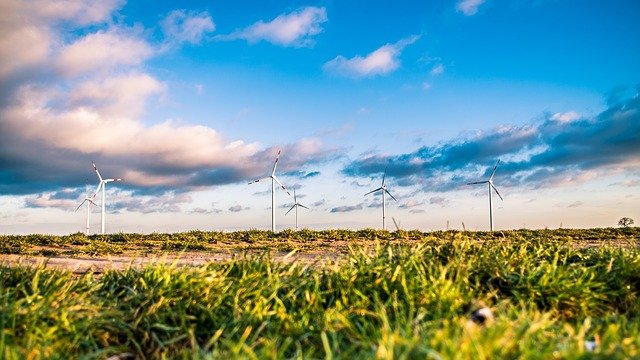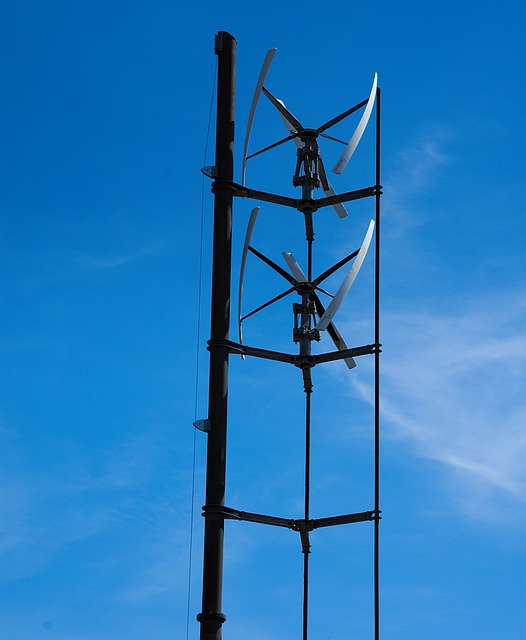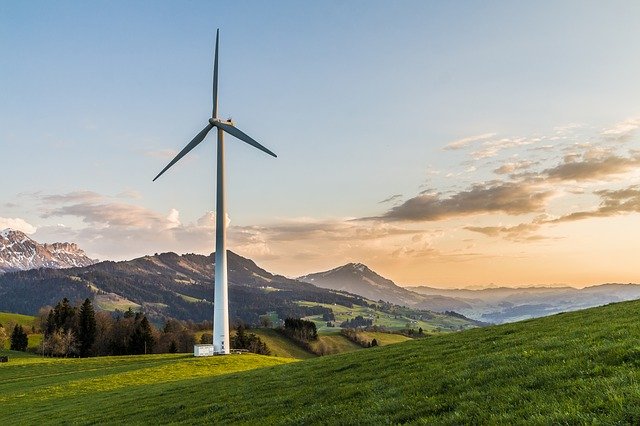Some Facts Regarding Wind Turbines:

Wind turbines or windmills, are forms of energy converters. They convert wind power or energy into electricity. These windmills as many people know them, are used to produce electricity from the movement of a turbine; these are some wind turbine facts to consider when choosing a source of alternative power that is suitable for your needs.
In the case of Wind turbines, To move the rotor blades, the power of the wind is used. This in turn moves a shaft, which then converts that rotational energy into electricity through a generator. This electrical power can be preserved in a battery, to be used later, or it can be delivered straight to your house or building that requires power – This is the basic description of how a wind turbine captures and stores energy. There are many other wind turbine facts to consider however such as …
Horizontal and vertical Wind Turbines:

Wind turbines come in two versions. One is the horizontal-axis turbines, and the other is the vertical-axis turbines. The horizontal wind turbines are the most common types of windmills used. These turbines look similar to typical windmills we often see around ranches.
The vertical turbines, on the other hand, are rare and look unusual. They are liked by some people due to their smaller size. They can produce electrical power from wind that originates from any sort of direction as opposed to the horizontal wind turbines that have to be readjusted if the wind changes direction.
Windmill Applications:
Wind mills are often used in ranches or farms where there is open space and a lot of wind. In such places, you can have one windmill or a hundred or more. In cases where there are many windmills, they can have them all linked together to create a huge amount of energy.
This energy can then be used to send power into the power grid. This energy can also be used by a large company to power their operations. Large farms have been known to use this kind of arrangement to generate all the power they need and even sell back some of it into the power grid.
Wind Turbines For Residential Use:
Wind turbines can easily also be made use of to produce electrical power for residential houses. If you have a big home, you could set up a smaller sized horizontal-axis wind turbine, especially if you have strong prevailing winds.
However, if you reside in the city and have a small space, you could think about setting up a vertical-axis wind turbine. They are smaller sized, and good for rooftops. In addition, they work well in less windy locations. However, in order to set up wind turbines in your home, you should see to it that your location is windy enough.
This means that you have to understand the average wind strength in your area. This is in addition to the wind power density, which gives you how much wind energy, can be produced per square meter. This calculation will usually be carried out for you by the windmill representatives, who should also advise you of the best size of windmill for your particular needs.
But rest assured that wind turbines can produce a lot of energy. One turbine may create enough electrical power for one residence, or perhaps power some big machinery. And if you are not ready to use the power immediately, it can be stored in batteries; to be used when there is no wind.
Due to the high initial financial investment, (which will certainly require a number of years to recover, perhaps as much as 10), wind generators need someone that is looking to use it for the long term.
In locations where there is a constant wind, they can easily develop energy around the clock and prove to be a worthy investment. Solar panels for instance, are also an effective source of renewable energy, but they cannot work at night like wind turbines.
The windmill turbines are also surprisingly also easy to run, and they do not produce any greenhouse gasses; since there are no fuels being burnt and no emissions being discharged into the air.
The Downside of Wind Turbines:
But like everything else there are some downsides when it comes to the use of wind turbines as a source of renewable energy. Arguably they’re certainly not good looking; particularly because they’re so big. Large installations or in areas where there are hundreds of windmills put together produce a lot of visual pollution.
Like any sort of mechanical system that moves, they can be rather noisy too. They are also loathed by wildlife lovers who complain that birds and bats are often eliminated by them. Bats particularly are prone, because their sonar system is disturbed by the windmills movements.

The concrete used in the bases of the larger commercial windmills also adds to the downside of windmills, bearing in mind that up to 900 tons or 250-300 cubic yards of concrete can be used to securely anchor them into the ground. This can have a severe effect on the ground ecological system, as they are usually placed on pristine elevated locations in the countryside.
However the positive attributes that wind turbines have, in many peoples opinion, far exceeds the drawbacks of using windmills. And with careful planning, one can minimize the drawbacks. Plus most governments are now paying out incentives for their use.
Looking at their support, one can say they are paying for the energy that you produce and buying the energy that you do not make use. The point is that the push is on by many world governments to reduce their ‘carbon footprint,’ and so wind turbine facts and figures must be explored in order to do this.
More Fun Facts About Wind Turbines:
- An offshore wind turbine can produce up to 6 million kWh per year.
- The tallest wind turbine has been installed in Gaildorf near Stuttgart, Germany and has a total height of 246.5 mtrs to blade tip.
- Just 1 rotation of a giant turbines ( 8.8 kWh ) blade can power a house for 1 day.
- Average height of a Wind turbine is around 80 metres or 280 feet.
- Windmills are painted white to ‘blend in’ and to help prevent expansion and contraction that damages the blades.
- Wind turbines do not like strong wind and will shut down if the wind gusts to 55mph to prevent damage.
- The lifespan of a turbine is 20-25 years depending on the environmental conditions.
- A single wind turbine can power up to 500 homes
- Wind turbines and windmills are not the same thing. A turbine produces electricity, whereas a windmill generates mechanical energy.
Recent Posts
The imminent energy crisis has become a great source of concern in these days. Conventional forms of energy cause a lot of environmental pollution and a good number of people have started using...
Steam rising from the ground is a sure sign of an active geothermal source of energy There is a real rush on in the alternative energy markets of the world; each advocate promoting their own...
